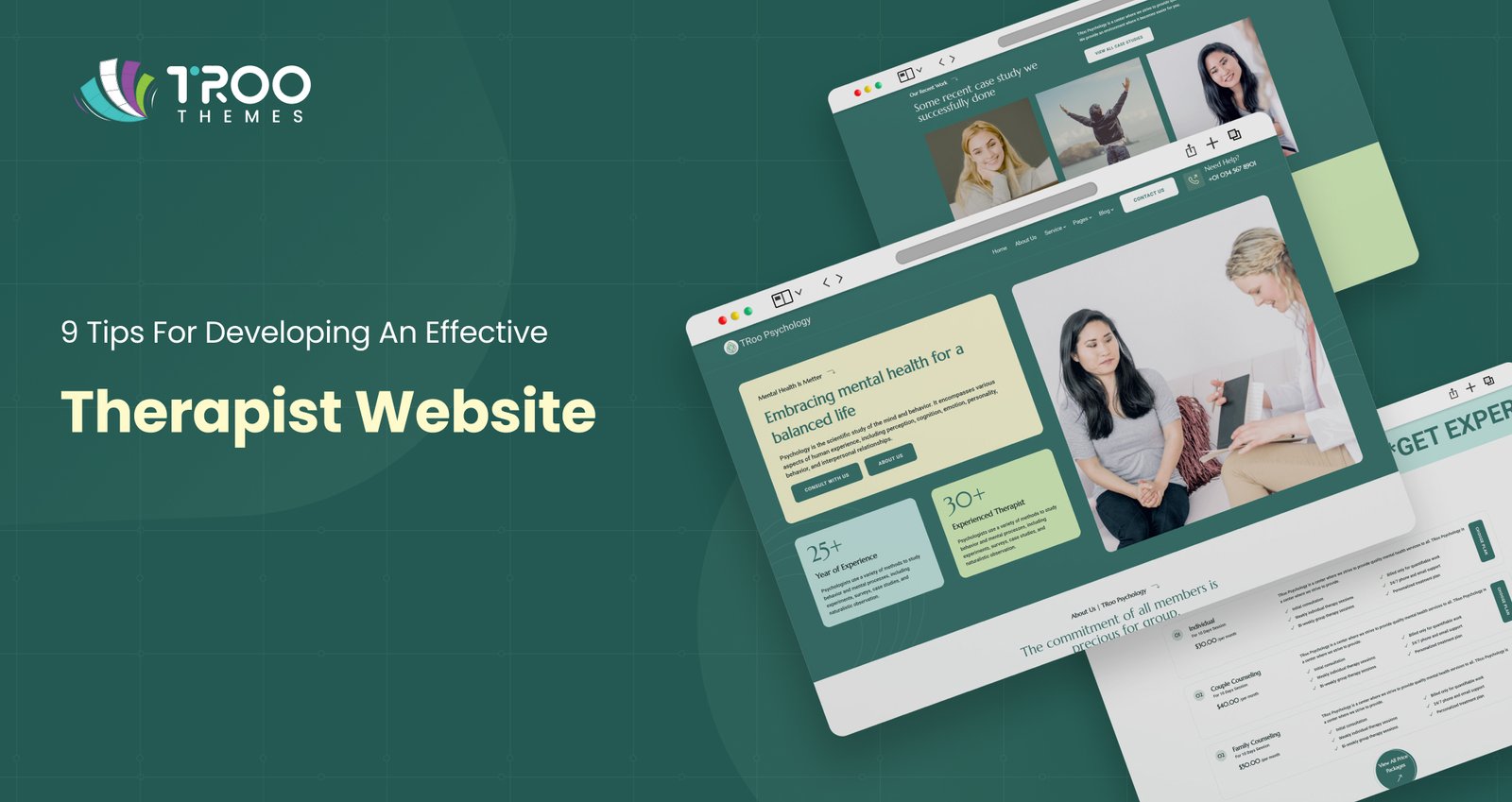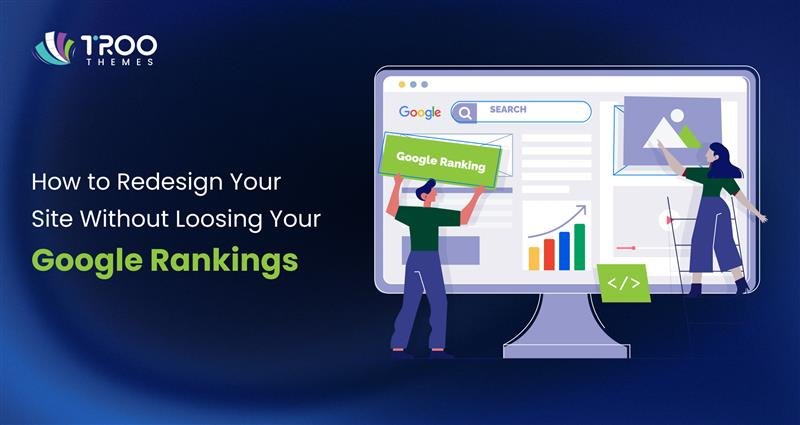A clinic alone cannot do justice to your therapist practice; having a full-fledged therapist website is essential. People in metropolitan areas generally search for therapists online, and your website can be a digital business card for them.
Through a website, you can attract more users from faraway areas by showcasing your offerings and services. Plus, it builds your online presence and enhances your chances of expanding your services virtually.
However, to achieve all these, developing a website, either from a theme or from scratch, is essential. Let’s dive in and explore the ten best tips to build a strong therapist website.
1. Choose A Calm Theme
A person seeking therapy usually prefers cool, clean, and calm things. If your website is overly cluttered and undermines professionalism, your visitors might be repelled. That’s why it’s essential to choose a theme that reflects calmness.
One such popular psychologist WordPress theme is the TRoo Psychology Divi Child Theme. It’s specifically designed with a modern layout, offering a clean and user-friendly experience to users. Designed specifically for mental health professionals, this theme provides multiple sections to create a clean and welcoming online presence.
2. Make Website Navigation Simple and Intuitive
Someone who is surfing through a therapist’s website is often overwhelmed, vulnerable, or not sure about where to navigate next. So, the best thing for them is a site that has easy navigation.
Keep your contact information and address easily accessible and not buried somewhere under confusing tree-structured menus. The same thing applies to even session booking sections.
Additionally, many people might visit your website through mobile phones, making it a necessity to have a mobile-responsive interface on your site. These are some essential factors to consider while developing an intuitive and professional website for therapists.
3. Explain Your Services Clearly
Keep the language and content of your website familiar and easy to read so users can know exactly what services you provide and how to contact you. Avoid using technical jargon or creatively irrelevant page names that confuse visitors.
Avoid adding vague descriptions like “helping people with life challenges.” Instead, mention therapies you offer, for example, couples counselling, individual therapy, or therapies for specific issues like trauma, stress, etc.
4. Add Online Session Booking and Contact Options
When a person is ready to reach out for therapy, the process of booking a session and contacting you should be simple. With accessible contact options, your website looks more approachable and trustworthy.
Offering different connection options, from session booking to direct contact, helps visitors feel supported right from the start. It saves their time and minimizes back-and-forth scheduling, so you can focus on helping them through therapy.
5. Add A Professional Bio And Photo
Taking therapy is deeply personal, and clients want to know who they will be talking to before booking a session. This is where a professional photo and bio of yours helps you gain their trust.
So, while choosing a psychologist WordPress theme or any other template for your website, verify if it has a bio section on the home page. In that section, add your high-quality photo to reflect reliability to visitors.
In the bio section, go beyond mentioning just qualifications. Also include details about your training, license, practices, therapy approaches, etc. Make it engaging to form a deep understanding with your clients easily.
6. Use Client Testimonials
Customer experience is a powerful way to grow trust and credibility for your therapist website. But, use it only if allowed! Some ethical guidelines and licensing boards restrict or discourage the use of client endorsements. So, check local regulations and rules before showcasing client testimonials.
If allowed, you can use client feedback as social proof for your potential clients to reassure them that others have had a positive experience working with you. It reduces the fear and hesitation someone might feel before reaching out to you for therapy.
7. Add Relevant Blog Content
A blog means a place where you can share your thoughts about therapies, therapy practices, etc., to educate potential clients and improve the website’s SEO.
Adding relevant blogs that are SEO friendly will increase the chances of your therapist website appearing in more search results and give visitors a reason to stay longer on your site. Plus, it helps build expertise, improve SEO, and offer reliability to visitors before they contact you.
8. Keep Your Site HIPAA-Compliant
The Health Insurance Portability and Accountability Act (HIPAA) ensures that sensitive client data is stored, transmitted, and handled securely. Even something as simple as a contact form can fall under HIPAA if it collects protected health information (PHI).
If your website is collecting personal health data from a visitor, you are legally and ethically obligated to follow HIPAA rules to protect the client’s privacy. Hence, make sure not to share the collected information with third parties and keep it confidential.
9. Focus On SEO For Local Visibility
Designing a beautiful therapist website will be fruitful only if you implement Search Engine Optimization (SEO) to increase local visibility. It will help optimise your site for search engines, especially with a local focus, and you can attract more potential clients who are actively looking for therapy in your surroundings.
These are the top nine points to monitor while developing an effective therapist website for your therapy firm. Now, let’s see the primary benefits of having such a website.
Benefits Of Therapist Website
Investing is a well-designed therapist website that offers far more than just a digital business card. It becomes a central hub for your practice, helping you connect with new clients, improve credibility, and grow professional presence. Here are the key benefits of therapist website:
- Improves your business visibility and helps people find your services when searching for therapy services online.
- Builds trust for your business by making a strong first impression in your prospective clients’ minds.
- It makes your therapy practice accessible across digital platforms, bringing more clients from faraway locations.
- Adding well-researched blogs on your therapist website helps even common readers to get awareness of mental health issues and their therapeutic solutions.
- Your website reflects your unique voice, approach, and values to attract ideal customers.
Final Verdict
Building a strong therapist website is an effective way to grow your practice, connect with the right customers, and create a supportive user experience from start to finish.
Additionally, by focusing on thoughtful design, clear communication, and user-friendly features, your website becomes a reflection of the care and professionalism you offer in every session.
Whether you are just starting your private practice or looking to refresh your online presence, implementing these tips will help you create a website that looks great and truly serves clients who are looking for trustworthy therapies. Take it one step at a time — and remember, the goal is to create a space that feels as welcoming and trustworthy as your therapy room.





